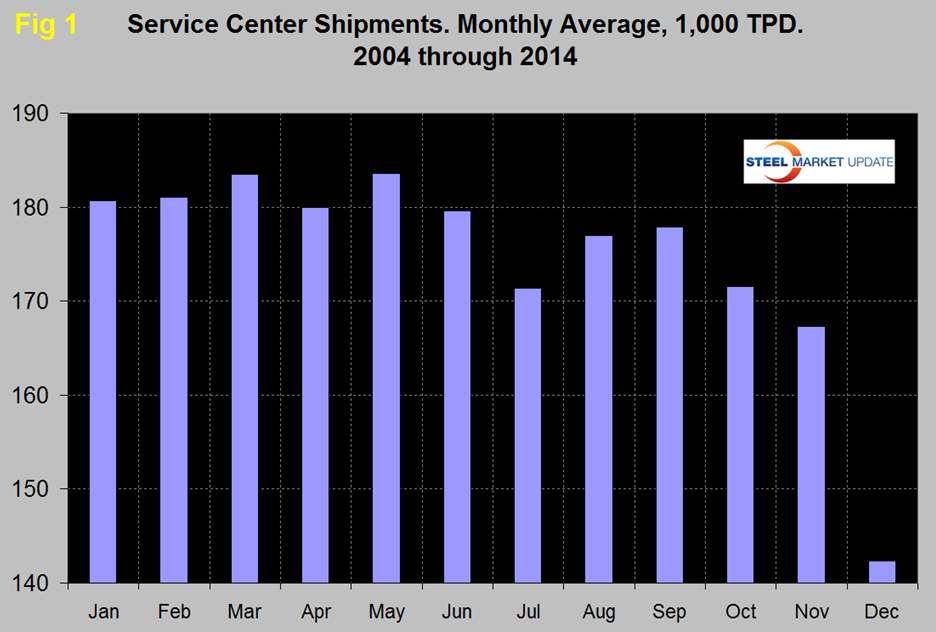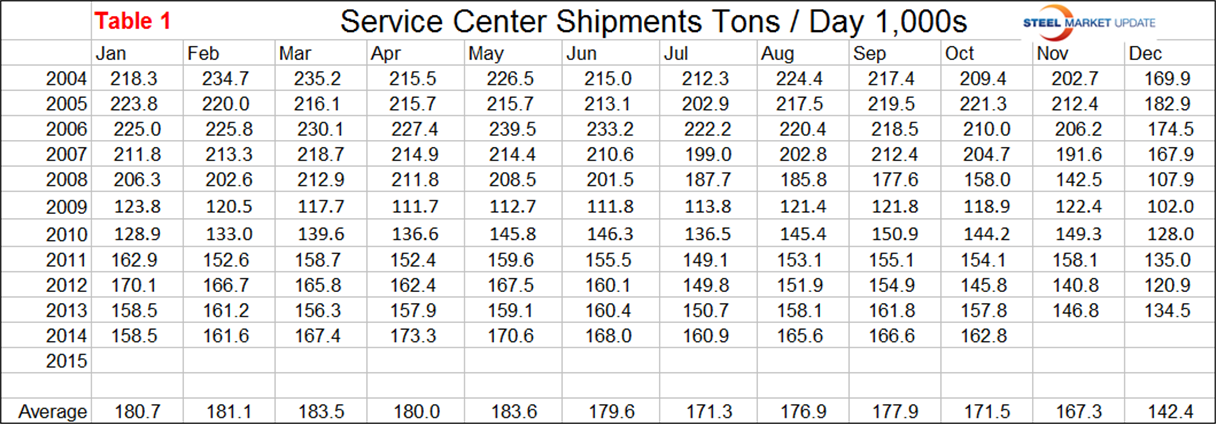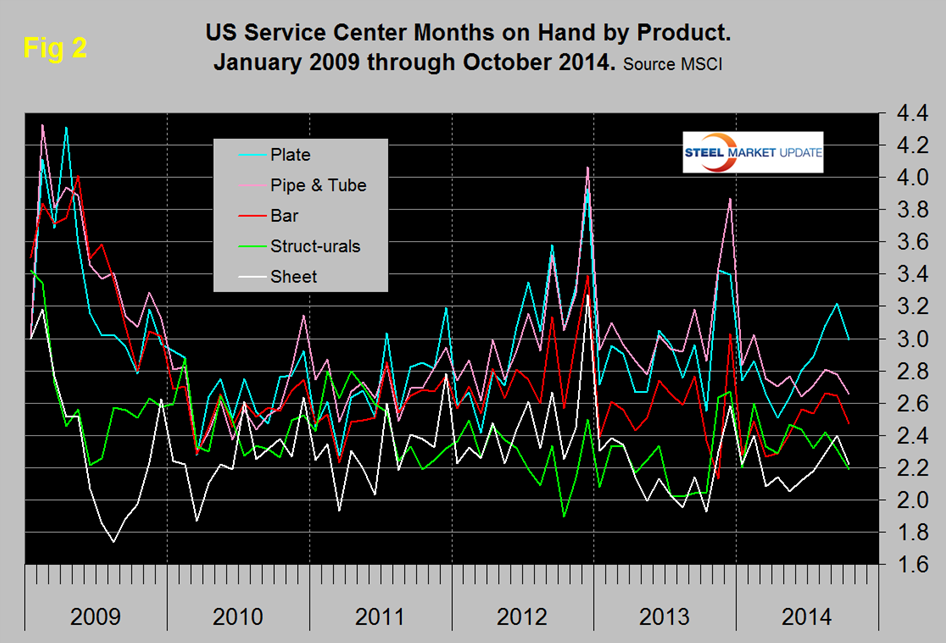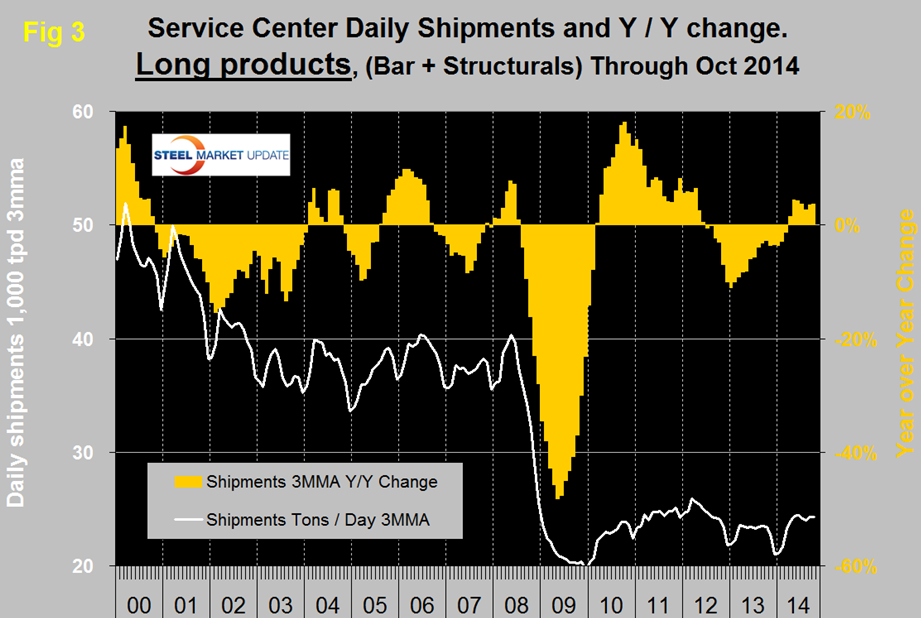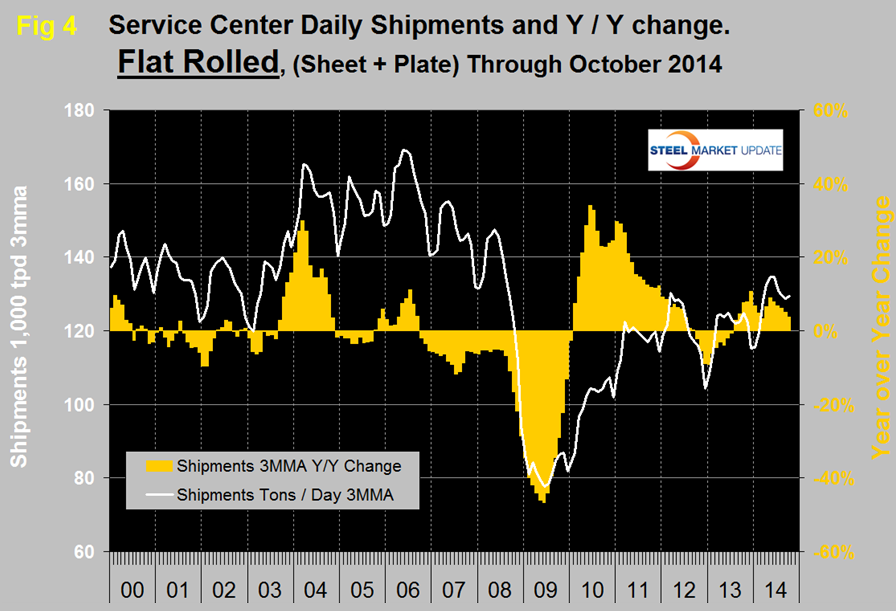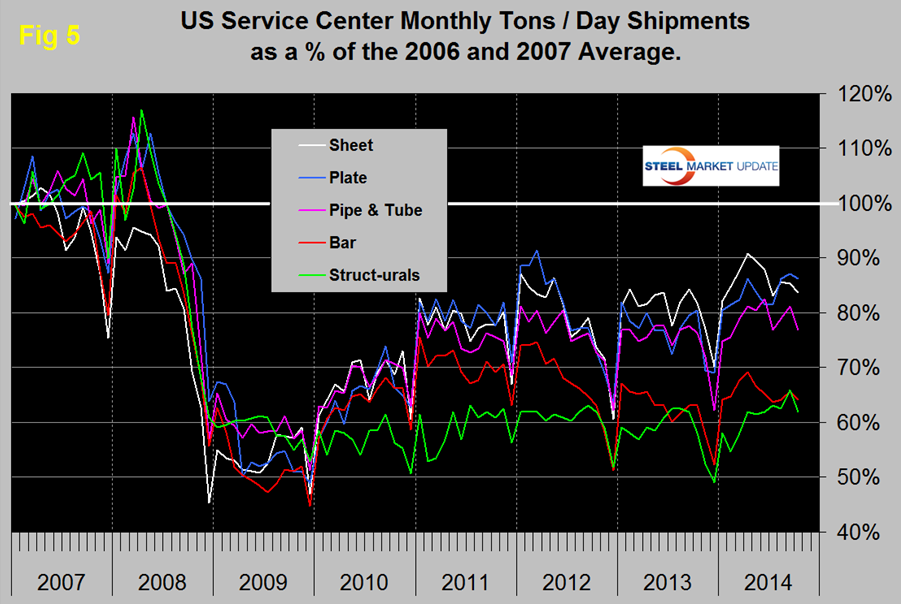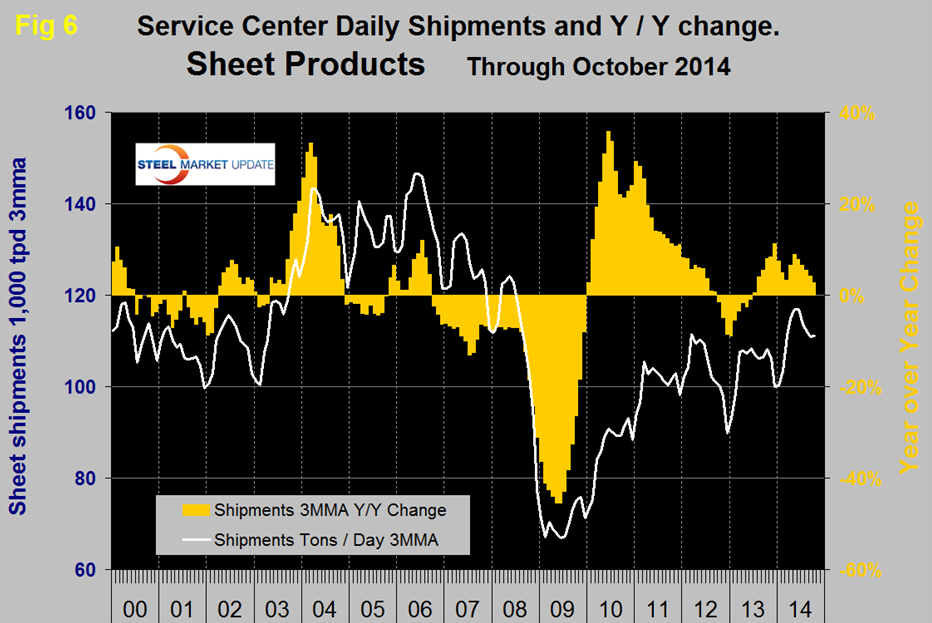Steel Mills

Service Center Intake, Shipments and Inventory in October 2014
Written by Peter Wright
November 19, 2014
Total service center carbon steel shipments in October increased by 244,000 tons to 3.742 million tons. This was due to an increase in shipping days from 21 to 23. On a tons per day basis (t/d) shipments decreased from 166,600 tons in September to 162,700 in October.
In every month this year since March, t/d shipments for each particular month have been the best since 2008. Daily shipments in October decreased by 2.3 percent from September, the average decrease September to October since 2004 has been 3.5 percent. Figure 1 demonstrates the seasonality of service center shipments and why comparing a month’s performance with the previous month is usually misleading.
For this reason in the SMU analysis we always consider year over year changes. The raw numbers for Figure 1 are shown in Table 1.
Table 2 shows the performance by product in October compared to the same month last year and also with the average t/d for October 2014, October 2013 and October 2012. We then calculate the percent change between October 2014, October 2013 and with the 3 year October average. We hope this give the best view of market direction. In October intake at 161,300 tons trailed shipments by 1,400 tons. Shipments of all products on a t/d basis were up by 3.1 percent from October last year and up by 4.7 percent from the average October shipments for 2014, 2013 and 2012. The fact that the single month comparison is lower than the three year comparison is an indication that growth is slowing. This is not true of individual products where structurals are showing a strong acceleration. Carbon sheet dragged down the average with a growth of 2.4 percent y/y and of 5.1 percent in the longer time comparison.
In September all products had an intake surplus but in October all except plate and tubulars reversed direction. Months on hand (MoH) increased from 2.53 at the end of September to 2.35 at the end of October.
Compared to the end of October last year, month end inventories were up by 15.6 percent in total, with only pipe and tube experiencing a contraction. Plate was up 25.5 percent and sheet up 18.0 percent. Figure 2 shows the MoH by product since January 2009. Comparing the end of October inventories with the end of September the inventories of all products declined as measured by months on hand. Sheet products constitute by far the largest segment of service center’s business, have had the best inventory management since 2009, currently only structurals has a lower months on hand.
There continues to be a wide difference between the performances of flat rolled (sheet + plate) and long products (structurals + bar) at the service center level. Long products have had a very poor recovery from the recession. On a 3MMA basis y/y, the growth of shipments was negative for 21 straight months until April this year which was the first of seven straight months of growth, (Figure 3).
Flat rolled has had a much better recovery since mid-2009 and has had positive y/y growth in each of the last fifteen months, (Figure 4).
In 2006 and 2007, the mills and service centers were operating at maximum capacity. Figure 5 takes the shipments by product since that time frame and indexes them to the average for 2006 and 2007 in order to measure the extent to which service center shipments of each product have recovered. Again it can be seen that bar and structurals have the worst record. Sheet has had the best recovery since the beginning of 2013 but plate caught up in August. Even so the recovery of sheet is only at 83.7 percent and plate at 86.2 percent. The total of carbon steel products is now at 76.6 percent of the shipping rate that existed in 2006 and 2007, with structurals and bar at 62.0 percent and 64.2 percent respectively. The recovery of the service center sector has been much slower than has been experienced by the mills. Presumably this is because more buyers are purchasing mill direct and this is probably particularly true of long products. In addition long products being more construction oriented are suffering from the slow recovery of that business sector.
MSCI uses product nomenclature flat and plate. In our analysis at SMU we replace the term flat with sheet. By our interpretation of the MSCI’s data their definition of “flat” is all hot rolled, cold rolled and coated sheet products. Since most of our readers are sheet oriented we have removed plate from Figure 4 to highlight the history of sheet products which are shown in (Figure 6). Positive year over year growth has occurred in each of the last sixteen months following nine consecutive months of decline.
The SMU data base contains many more product specific charts than can be shown in this brief review. For each product we have ten year charts for shipments, intake, inventory tonnage and months on hand. Readers are welcome to these on request but please don’t ask for all of them at once!

Peter Wright
Read more from Peter WrightLatest in Steel Mills

Trump still against selling USS to Japanese firm: Report
Despite ordering a new review of Nippon Steel’s bid for U.S. Steel, President Trump said he is still against selling USS to a Japanese company, according to media reports.

Algoma looks to sell more steel in Canada in wake of Trump’s tariffs
The Canadian steelmaker said its absorbing higher tariffs as it moves forward.

Ancora abandons plan to take over leadership of USS
Investment firm Ancora Holdings Group has halted its play for U.S. Steel's board, citing Nippon Steel’s proposed bid for USS “gaining momentum.”

Ancora says plan for USS would yield higher value than Nippon deal
Ancora’s intention to replace U.S. Steel's leadership was first announced in late January.

Trump orders new CFIUS review for USS
President Trump has ordered a new review of Nippon Steel’s proposed buy of U.S. Steel, to be completed within 45 days.

